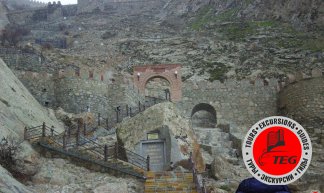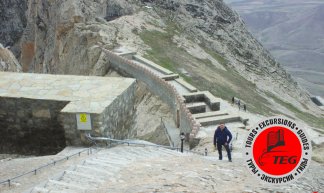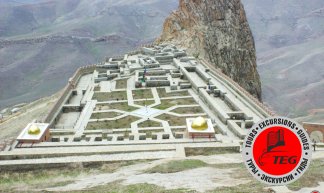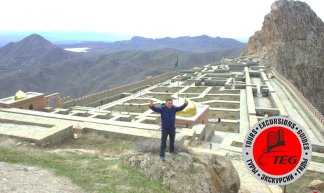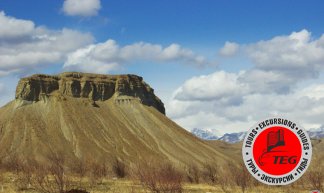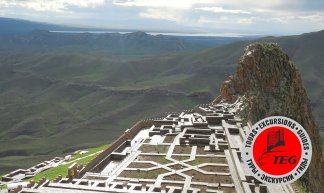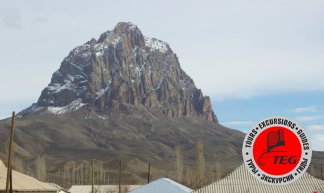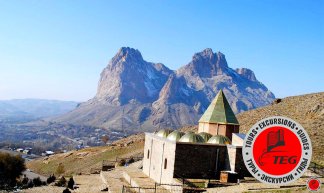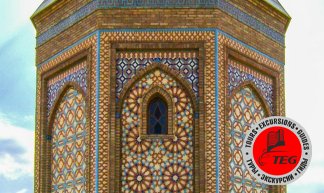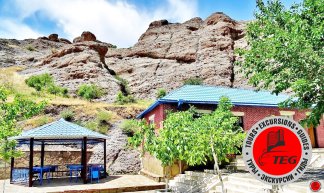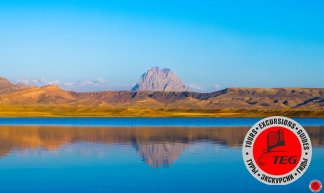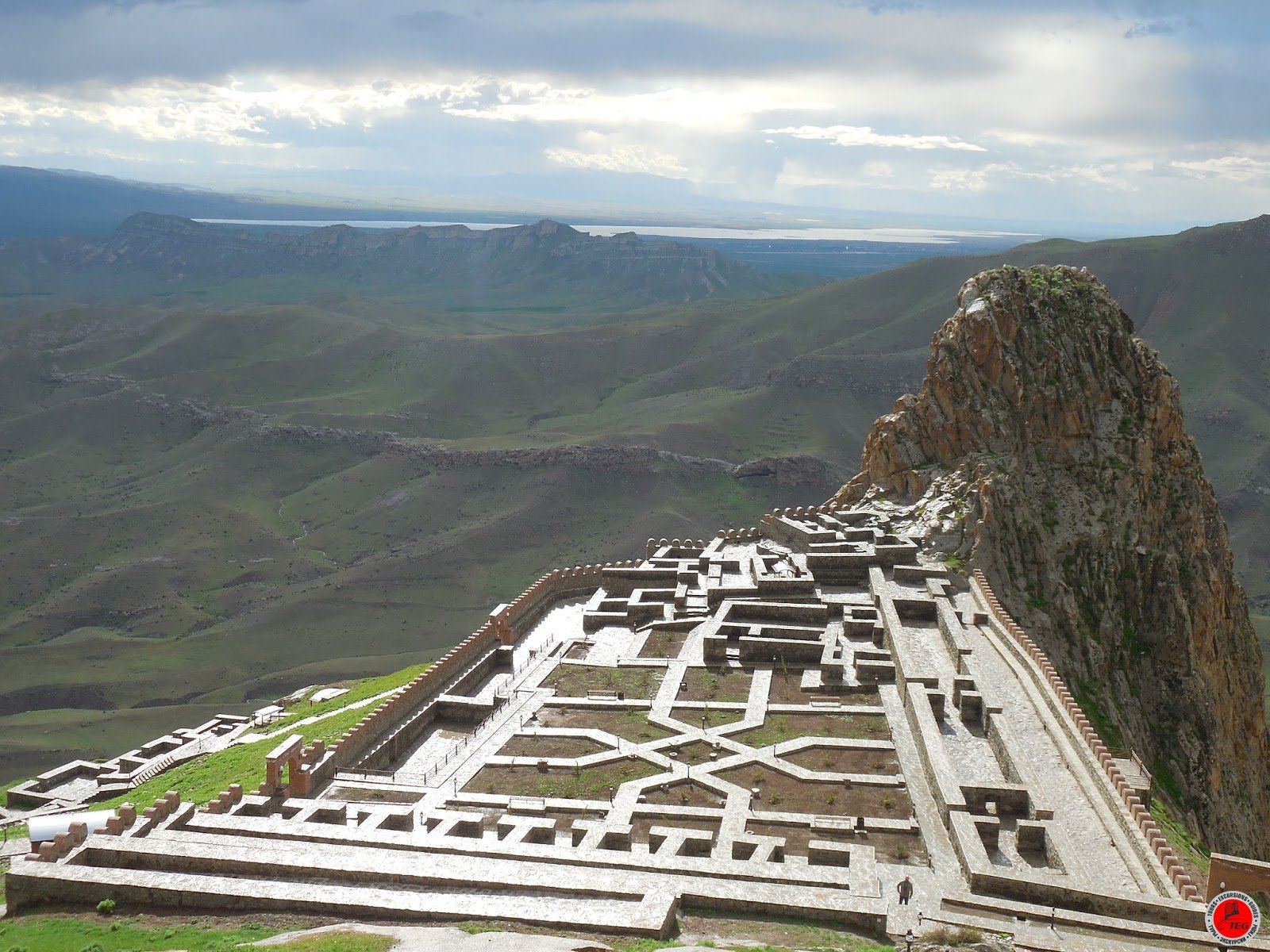
5-07-2025, 12:22
Alinja - Azerbaijan's "Machu Picchu! An unusual tour to Nakhchivan with the best guides.
🏰 Alinjagala Fortress — The Impregnable Mountain Stronghold of Azerbaijan
Explore the legendary Alinjagala Fortress, one of the most awe-inspiring and historically significant fortresses in Azerbaijan. Located in the Julfa region of the Nakhchivan Autonomous Republic, this fortress sits atop Mount Alinja, offering breathtaking views and a rich tapestry of ancient and medieval history.
📍 Where Is Alinjagala Fortress Located?
Alinjagala is strategically situated on the right bank of the Alinjachay River, on the summit of Mount Alinja. Its location provided natural protection, making it one of the most impregnable fortresses in the region for centuries.
🕰️ A Fortress with Deep Historical Roots
Estimated construction period: 1st–6th centuries CE
Mentioned in ancient texts as Erinjag, Erinjik, Alandzhik, Alyndzha
Name origin:
In Arabic, “Alinja” means “Ali’s place”
In Turkic, it translates as “after the capture”
Folk etymology links “Alinjak” with “refusal”, referencing the fortress’s unconquerable nature
📚 What Makes Alinjagala So Special?
Alinjagala is a symbol of grandeur, resistance, and Azerbaijani heritage. Historians, including Nasavi (13th c.), Sharafaddin Ali Yazdi (15th c.), and traveler Evliya Çelebi (17th c.), described it as a key stronghold with a unique structure.
According to Spanish ambassador Ruy González de Clavijo, who visited in the early 1400s:
“Alinjagala is located on a high and steep mountain and is surrounded by towers. Inside the walls... are vineyards, gardens, pastures, springs, and pools. The castle sits atop the mountain.”
🏯 Fortress Architecture & Design
Alinjagala amazes visitors with its extraordinary structure:
Three main sections: northern, northwestern, and southwestern
Stone steps connect different levels of the fortress
Walls and towers built from large stones and burnt bricks
Remains of eight defensive walls and semicircular towers
The upper fortress contains ruins of residential and public buildings
The central complex, “Shah Takhty” (Throne of the Shah), housed feudal lords and rulers
🏺 Artifacts and Archaeological Findings
Discovery of Chinese celadon porcelain, brought via the Great Silk Road
Evidence of vineyards, pastures, and natural springs within the walls
Remnants of palaces and feudal estates, mentioned even in 19th-century literature
⚔️ The Fortress in Military History
Alinjagala played a crucial role in various historical periods:
12th–13th centuries: Refuge of the Eldegezid dynasty, treasury and residence of rulers
1225: Last Eldegezid ruler, Uzbek, dies defending the fortress from Khorezmshah Jalal ad-Din
14th century: Controlled by Hulakids and later Jalairids
Commanders included: Ustamur, Haji Jovhar, Amir Altun, Seyid Ali, Ahmed Ogulshay
🛡️ Defying the Army of Timur
In the late 14th century, Alinjagala became the main stronghold of resistance against Timur's army, enduring a siege that lasted 14 years:
In 1393, commander Altun launched a surprise attack, defeating the enemy near the gates
In 1397, combined Sheki and Georgian forces broke the siege and rescued Sultan Tahir
Despite Timur’s return in 1399 with a larger army, Alinjagala held out until internal conflicts weakened the defense
🔍 Why Visit Alinjagala Fortress?
Step into a real-life fortress from epic tales like “The Book of Dede Gorgud”
Experience one of the best preserved medieval fortresses in Azerbaijan
Perfect for history enthusiasts, photographers, and adventure seekers
Stunning panoramic views and hiking opportunities
Ideal day trip for visitors to Nakhchivan
🧭 Plan Your Visit
Best time to visit: Spring and autumn (for mild weather and clear skies)
What to bring: Comfortable shoes, water, camera, sunscreen
Nearby attractions: Ashabi-Kahf cave, Momine Khatun Mausoleum, Nakhchivan City
🧳 Book Your Tour to Alinjagala Fortress Today!
Explore the ancient secrets of Azerbaijan, from legendary mountain fortresses to Silk Road relics. Alinjagala is not just a monument — it’s a journey through history.
Contact us to book your private or group tour to Alinjagala and other unforgettable sites in Nakhchivan and Azerbaijan.
Are you interested in Alinja - Azerbaijan's "Machu Picchu! An unusual tour to Nakhchivan with the best guides.? Then contact us, and we will answer all your questions regarding this service.
Phone numbers: +99450-208-22-86 (Whatsapp) +99455-208-22-86 (Viber)
Email: [email protected]
